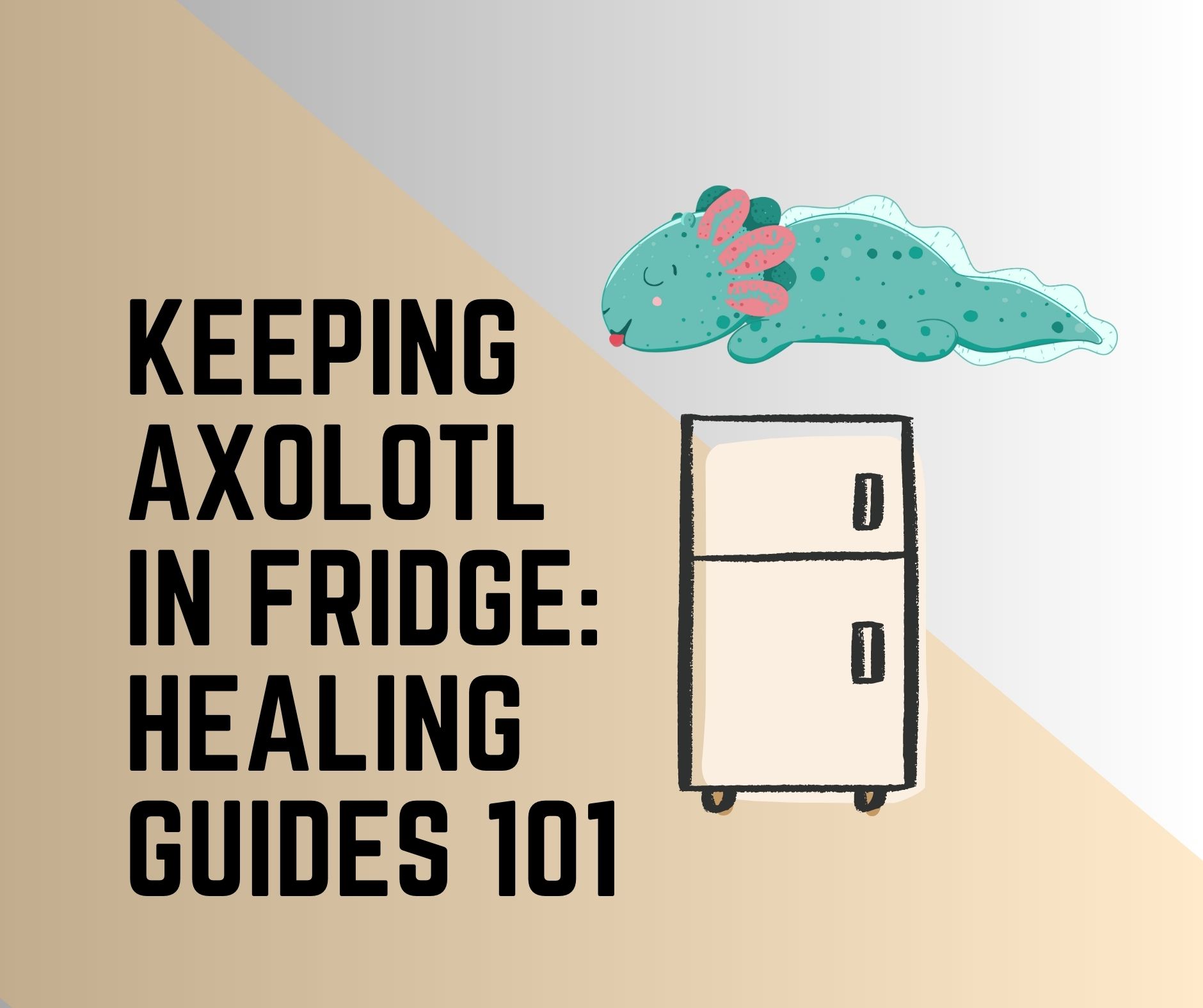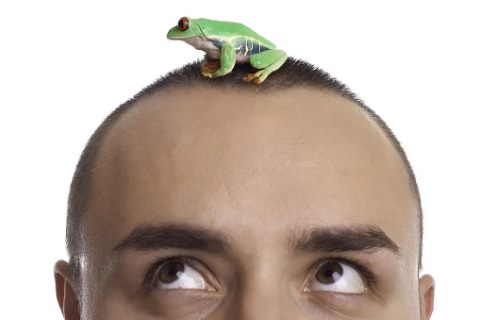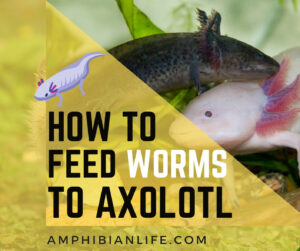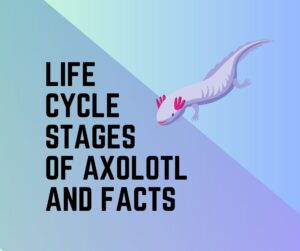
Axolotls are unique aquatic salamanders, and the idea of keeping them in a fridge is gaining massive attention. Yes, you read that right. Keeping Axolotls in a Fridge is a popular practice that helps these aquatics go through a healing process. Axolotls are delicate creatures that require careful care and attention. It is common for Axolotls to suffer from infections and illnesses, some of which are treated by keeping them in the fridge. But is it safe to put Axolotls in Fridge?
Well, it is safe to put Axolotls in Fridge as long as you are doing it rightfully. However, if you are curious about the process and its effect, join us in this article, and we will provide a comprehensive guide. The article will explore how to safely and effectively put your Axolotl in the fridge and the necessary preparations you need to make. We will also focus on the benefits of cooling your Axolotl and more about it. Make sure you stick to the end and educate yourself well.
Why Would I Put My Axolotl In The Fridge?
Despite how counterintuitive it may sound, putting Axolotls in Fridge has a range of benefits for these unique amphibians. One of the main reasons why you should put Axolotls in the fridge is that it promotes healing. Especially if the Axolotls are experiencing health issues like injuries or infections, Fridging them could introduce many benefits.
As you place your Axolotl in a cooler environment, it reduces inflammation and prevents further damage to their suffering. Besides that, cooling can actually help in slowing down your Axolotl and thus reduce the amount of energy they need to heal and recover. It further speeds up their healing process while increasing the chances of recovery.
However, before you put your Axolotl in the fridge, remember it should only be done under specific circumstances.
How To Fridge An Axolotl in 5 Easy Steps
Fridging an axolotl is a delicate process, and thus, it requires careful attention and preparation. Here is the easy step-by-step process explaining how you can safely and effectively fridge your Axolotl:
- Firstly, prepare a suitable container that is big enough to accommodate your Axolotl. Choose a plastic or glass container and make sure it has a secure lid. The lid will help to prevent your Axolotl from escaping. Besides that, pick a clean and disinfected one for the Axolotls’ well-being.
- Now, add water to the container, precisely dechlorinated water. The water level should cover Axolotl’s gills. Another important thing to note is that water temperature should be typically around 5.5 to 9 °C. While putting the Axolotl in the container, avoid too much handling as it can cause stress and injury. Quickly place the lid securely on the container to prevent your Axolotl from jumping out. However, ensure leaving a small gap to allow for air circulation.
- For the duration you are fridging your Axolotl, check on it regularly. Also, do monitor the water temperature and change it if required.
- Once the healing process is done, slowly reintroduce your Axolotl to a regular environment. Increase the water temperature slowly over several days.
While following the above step, always consult with a veterinarian or experienced axolotl owner before.
Fridging Guide For Sick Axolotls
Fridging has immense benefits for helping sick or injured axolotls heal. However, to avoid further harm, it is important to do it correctly.
Here are some important tips for Fridging your sick Axolotl:
- Make sure you pick a container that is big enough for your Axolotl to move around and has a secure lid to prevent escapes.
- Only use dechlorinated water of temperature between 5.5 to 9 °C. You can use an available thermometer to ensure preciseness and monitor the temperature throughout the process.
- Do keep an eye on how comfortable and safe the Axolotls are feeling. Upon sensing any stress and discomfort, remove them immediately.
- If your Axolotl is sick, they may require smaller and more frequent meals. Make sure you consult a veterinarian or experienced axolotl owner for feeding recommendations.
- Once your Axolotl is healing, slowly reintroduce it to its normal tank. Avoid doing it immediately, or it may lead to shock.
Lastly, it is important to note that Fridging isn’t a substitute for veterinary care. If your Axolotl is seriously ill or injured, seek professional help.
Can You Put Baby Axolotls In The Fridge?
Unless it is absolutely necessary, do not fridge baby axolotls. Baby axolotls are extremely delicate and sensitive to changes in temperature and water conditions. Fridging them can prove highly stressful and may even harm their growth and development.
And even if your veterinarian advises you to fridge a baby axolotl due to illness or injury, make sure you take extra precautions. Especially monitor the water temperature and your Axolotl’s behavior closely. The water temperature is appropriate for your Axolotl’s species and age (ask precisely to an Axolotl expert)
Consult with a veterinarian before fridging a baby axolotl. It is ideal for the amphibian’s health and comfort. However, if alternative methods are available, a shallow water bath with medication or other treatments, avoid Fridging baby axolotls.
How Long Should I Fridge My Axolotl?
Keeping Axolotl In Refrigerators For Several Days: How long you should fridge your Axolotl will depend upon why you are fridging the amphibian. Fridging usually isn’t recommended for short spans and ideally is done for up to two weeks. Fridging Axolotls basically help the amphibians with specific health issues like stress, injury, or bacterial infections.
How long you can fridge your Axolotl also depends upon their behavior, appetite, and overall health while in the process. As you notice any concerning changes, like lack of appetite or unusual behavior, remove your Axolotl and seek veterinary help.
Though shorter fridging spans aren’t helpful, it isn’t recommended to keep your Axolotl in the fridge for extended periods as well. Doing so can cause stress and other health issues to the poor aquatic being. While it is important to leave your Axolotl for an extended period of time, make sure you are doing it under expert supervision.
Axolotl Fridge Temperature
The recommended temperature for fridging an axolotl is between 5.5 to 9 degree Celsius (no lower than 5 degrees Celcius).
The above temperature range is usually considered safe for most axolotl species. Fridging them in this range can help reduce stress, slow down metabolism, and promote healing for sick or injured axolotls.
However, while you are fridging your Axolotl, do use a thermometer to monitor the water temperature. It is important to ensure that the water temperature remains within this safe range since any significant fluctuations potentially harm Axolotl’s health.
Also, another major aspect to consider is that different axolotl species may have slightly different temperature requirements. Therefore before you go forward with the fridging process, do consult with an experienced axolotl owner or veterinarian for specific advice.
Fridging Axolotl For Fungus- Is it a good idea?
Fridging can be a useful treatment option for axolotls with fungal infections. However, a fridge only cannot be a savior, and thus, one should use it in conjunction with other treatments.
Fridging Axolotls does slow the progression of fungal infections and reduce stress on the amphibians; however, it isn’t a cure. Fridging only helps when combined with other treatments like antifungal medications and water changes.
How Do I Know If My Axolotl Is Dying?
Leaving Axolotls in the fridge for a long time or when the water temperature drops too low can cause stress and other health issues. In the worst-case scenario, the situation can also lead to death.
Here are some signs that your Axolotl may be in distress or dying during or due to freezing:
- Axolotls may become lethargic or unresponsive.
- Axolotls may stop eating or may have a reduced appetite.
- Axolotls may have difficulty breathing or breath faster than usual.
- Axolotls may have pale, gray, or discolored skin.
- Axolotls may swim in unusual or erratic patterns. They may even struggle to stay afloat.
- Axolotls may suffer from white spots on the skin or fin rot.
If you notice any of the above signs, remove your Axolotl from the fridge immediately. Follow it by seeking veterinary care as soon as possible.
Benefits of Cooling Your Axolotls
Cooling, or “fridging,” your axolotls can have several benefits. Here are some of the important ones to mention:
- Cooling Axolotls can reduce stress by slowing down their metabolism and allowing them to rest.
- Cooling Axolotls can promote healing by reducing inflammation. It allows the body to focus on healing.
- Cooling Axolotls can be effective for fungal infections or bloating.
- Cooling Axolotls can help slow down the growth of axolotls. It is helpful if you do not have enough space for a full-grown axolotl.
- Cooling Axolotls can also prevent axolotls from breeding. Axolotl keepers practice the same when they are not ready to breed your axolotls or to space out their breeding cycles.
However, it’s important to note that cooling your axolotls should be done carefully and under guidance.
Wrapping up…
Overall, fridging can be helpful for treating certain illnesses and promoting healing in axolotls. However, make sure you take proper guidance before you start fridging your Axolotl. Also, do monitor your Axolotl closely during fridging to ensure its health and well-being.

Hi, I’m Mike, and I’m the creator of amphibianlife.com. If there was one word to describe it? It would be: passionate about Amphibians! Whether you want to know more about amphibians or have a presentation to give at school, you’ve come to the right place.







